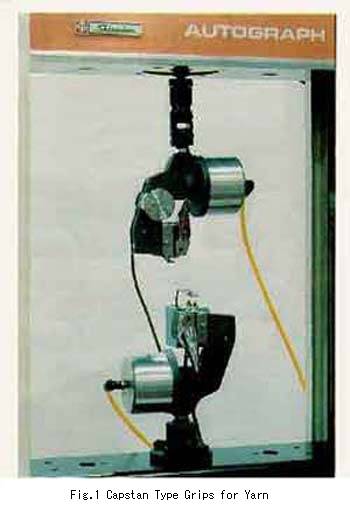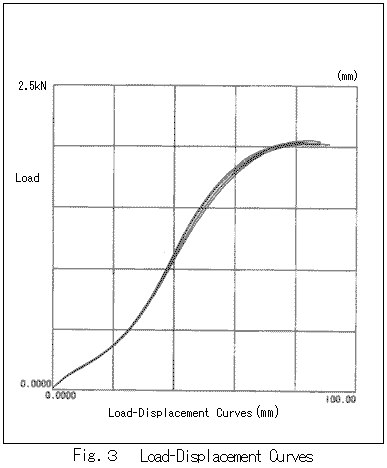Static Tensile Strength Test of Fishing Lines Selection of the best fitted grips Autograph (III)

As Japan is an island nation surrounded by ocean, the Japanese have fished for sustenance since ancient times.
The preferred methods of fishing are rod fishing and net fishing.
For rod fishing, there is a variety of nylon fishing line available on the market. Different types of line can be used for small river-game fishing, such as that of AYU (sweet fish); for big target fishing in the ocean, such as that of tuna; or for sporting and leisure purposes.
The following is an example of a test of fishing lines with a pair of grips for tensile test use.
Test piece
|
Material |
: |
Nylon fishing line |
|
Outer diameter |
: |
2mm |
Testing conditions
|
Testing machine |
: |
Shimadzu Autograph |
|
Capacity of load cell |
: |
5kN |
|
Loading speed |
: |
300mm/min. |
|
Distance between grips |
: |
300mm |
Example of the best fitted grips
Pneumatic capstan type grips for yarn (Fig. 1)
|
Grip capacity |
: |
5kN |
|
Pneumatic pressure |
: |
400kpa |

Holding a yarn test piece
Both ends of a test piece (yarn) are placed between the grooves of the upper and lower grips and held firmly with pneumatic pressure. This pressure is controlled by on/off actuation coming from a footvalve, facilitating efficient operation.


| Specimen No. | Max. load | Elongation at max. load | ||
| kN | {kgf} | mm | % | |
| 1 | 1.98 | 202.1 | 83.3 | 27.7 |
| 2 | 1.99 | 203.3 | 79.0 | 26.3 |
| 3 | 1.98 | 202.9 | 78.8 | 26.2 |
| 4 | 2.00 | 204.5 | 81.7 | 27.2 |
| 5 | 2.00 | 204.9 | 83.3 | 27.7 |
Fig.2 shows that all test pieces were broken not where they were gripped, but at the center where the break was expected to occur.
Fig.3 and Table 1 affirm that the tests were conducted correctly without deviation of test data (load versus strain).
It is spring now, high season for racket sports like tennis and badminton. "Guts," the life and soul of a racket, can also be accurately tested for their tensile strength, using these same grips.


